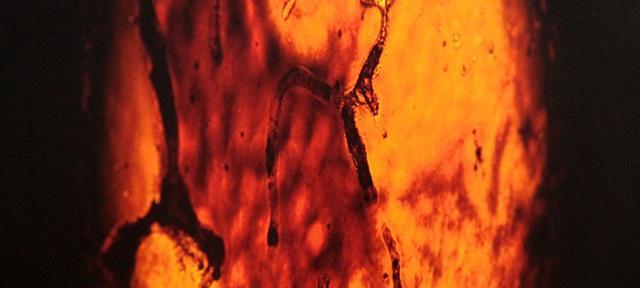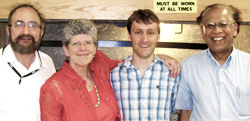Designing DNA

Isaac Bruss 06F can tell DNA to self-assemble into a structure of his own choosing.
By Taliesin Nyala 07F
Isaac Bruss 06F can tell DNA to self-assemble into a structure of his own choosing.
In 2009, scientists took DNA nanotechnology to the next level: they figured out how to make nature's smallest building blocks self-assemble into crystallized structures. Essentially, scientists attach DNA to nanoparticles, which in turn direct those particles to form structures.
For Div III, Bruss, who did an internship in the Center for Functional Nanomaterials at the Brookhaven National Laboratory in New York, built on this groundbreaking work by designing DNA with two binding zones, instead of just one.
"My Div III gives these materials the ability to be dynamic by changing their shape, structure, and size," Bruss says.
"There are exciting applications with DNA nanotechnology," he says. "Like the ability to self-assemble materials on a smaller scale than we've ever been able to before. In the future, we could one day make prisms or lenses that bend light backwards in such a way as to make things invisible."
The puzzle of how to create two binding zones took a year to solve. To do it, Bruss first needed a machine sensitive enough to look at individual molecules, so he spent last fall working with Amherst College senior Elias Milki to build a single-molecule spectrometer with fluorescence resonance energy transfer capabilities.
While building the machine, Bruss also designed strands of DNA and did the theoretical work that would undergird his experiments. This past spring, he tested those DNA using the spectrometer to see if they had the capabilities he wanted. They did.
Bruss presented his work at the Applied Spectroscopy Symposium and the American Chemical Society Symposium, where he took best poster (a poster explains the entire scientific project). He will double-check his work this summer, and then plans to get it published.
The Div III convinced him that science is the place he wants to be. "I got to lead my own research project," says Bruss, who starts the Polymer Science and Engineering Ph.D. program at the University of Massachusetts in the fall. "It was completely self-designed and led, and it reinforced my passion for doing science."
 |
Professor of Physics Herb Bernstein, Professor of Chemistry Dula Amarasiriwardena, and Amherst College Professor of Chemistry Pat O'Hara.
Article Tags

